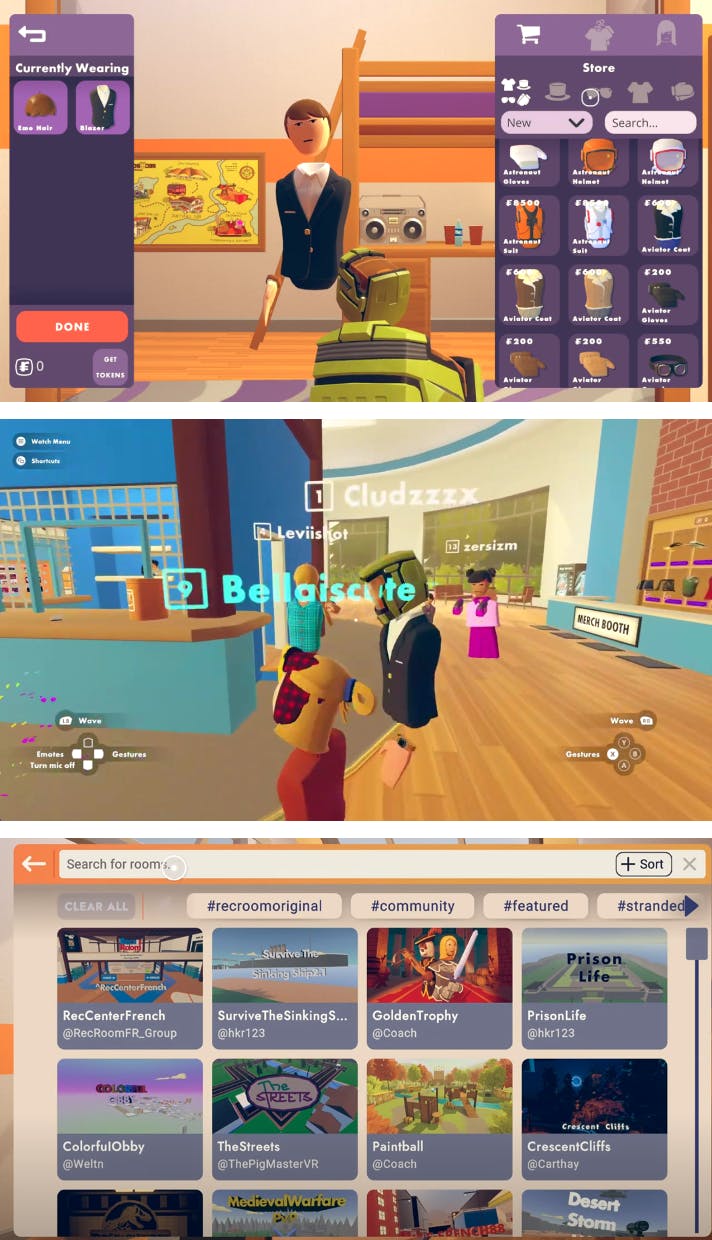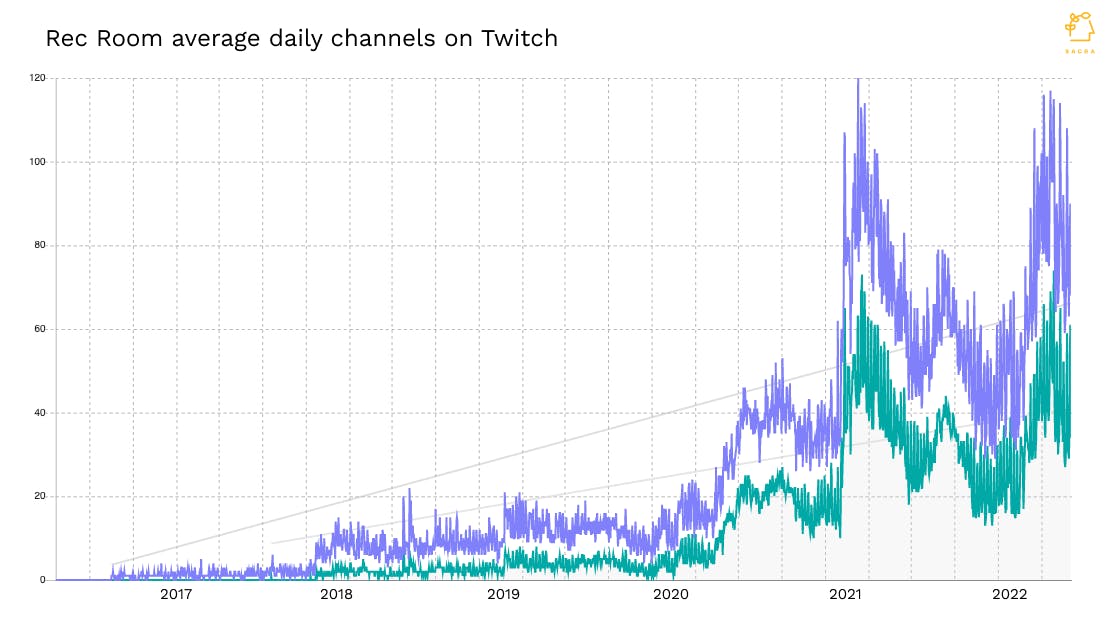
Jan-Erik Asplund
Co-Founder at Sacra
Rec Room is a gaming company building the “Roblox of VR” that lets users interact, explore, and play games in player-created rooms. The company has raised $294M, most recently raising $145M from Coatue with participation from Sequoia Capital, Index Ventures, and Madrona Venture Group.
Rec Room is more of a platform for VR games and experiences than a videogame itself. Users customize their virtual avatars, meet and chat with other players in the lobby-like Rec Center, and then jump into different player-designed rooms with them.
Some rooms are designed more like traditional games, from PVP (player versus player) games like ^armadilloPVP (a take on Red Dead Redemption) where players fight and interact in a Western setting, to suspenseful, story-driven experiences like TheBackroomsAllSeeing.
Others are more laid-back—like CrescentCliffs, where users hang out and casually parasail without objectives, or VerifiedStudioV2, where aspiring musicians can sing and perform for others.

From top to bottom: Rec Room’s avatar designer, hanging out in the Rec Center, and choosing a room
Rec Room launched in 2016 with six pre-built games like paintball, disc golf and paddleball—essentially “Wii Sports for VR”—available on Steam VR.
Since then, Rec Room has expanded to many VR and non-VR platforms, including Windows, PS4, PS5, Oculus Quest, Oculus Quest 2, iOS, Xbox One, Xbox Series X/S, and Android. 37 million people have played Rec Room across 12 million player-created rooms across all platforms.

Rec Room’s growth took off with the onset of COVID, with their average daily Twitch channels almost immediately tripling. Opening the platform up to more platforms continued that growth.
After their 2021 growth, we estimate that Rec Room has about 23 million monthly active users (MAUs) and 760K daily active users (DAUs). That’s about 76x as many as Meta’s Horizon Worlds VR project, which was 300,000 monthly users. Console and VR users spend around 2.4 hours per day in Rec Room, comparable to Roblox’s 2.6 hours per day.
Rec Room started off as a free-to-play platform, but like Roblox, introduced features allowing users to charge others in-game currency to sell their own items and a subscription service (Rec Room Plus) that offers discounted in-game currency and other perks.

Given the similar business models, we used information from Roblox’s public filings to benchmark Rec Room’s revenue. Roblox had a stable monetization rate of about $5 per MAU until 2021—assuming similar for Rec Room, we get $60M in revenue for 2021 and a run rate of $117M for 2022 as of March.
Rec Room competes with other multiplayer, multi-platform and online games like Roblox, as well as VR platforms like VRChat and Meta’s Horizon Worlds.
Against these games, Rec Room is positioned as an end-to-end consumption and creation experience where the creation of new in-game assets itself occurs in-game, whereas designing assets for e.g. VRChat requires spending time in a game design engine like Unity. In Rec Room, by contrast, users can collaborate with others in-game, voice chat, etc. while building. In addition, Rec Room players can create across platforms, while Roblox and VRChat creators are limited to creating on the PC versions of the games.
Rec Room has been moving away from VR as a defining feature of the product and positioning itself for more direct competition with games like Roblox, perhaps in response to VR’s lack of growth and traction with their core audience. According to the Piper biannual teen survey, 17% of teenagers who own a VR headset use it once a week, and only 5% use it every day.
There’s reason to suggest that Rec Room’s transition might be succeeding: just 25% of its user base was using Rec Room on VR platforms as of March 2021, down from 100% a few years prior.
There are a few key tailwinds and future growth opportunities worth considering for Rec Room:
Metaverse investment
Big companies like Meta and Microsoft are prioritizing metaverse projects like Quest, Horizon Worlds, and AltspaceVR. Companies related to the metaverse raised about $10B in 2021. Global spend on VR/AR is expected to hit $72.8 billion by 2024. And the more attention that is brought to the space by big companies, startups and investors, the more it will benefit early entrants into the category like Rec Room (founded in 2016).
User growth
Roblox and Minecraft are two of the biggest games in the world today. Roblox alone has about 200 million MAUs and pulls in nearly $2B of revenue per year. But the natural dynamics of stagnation and decline in the gaming industry mean that Rec Room has a massive opportunity to pick up players of these games who become burned out on the mechanics, community, or want a novel experience.
Non-gaming and B2B use cases
Rec Room has announced its ambitions to move into older age brackets and non-gaming use cases like weddings, family reunions, company retreats and more. And we’re seeing signs that the kind of VR/AR gaming pioneered by Roblox and Rec Room may be catching on with older people: as of November, more Roblox users are over 13 than under 13, and according to their S-1, 30% of the player base is over the age of 17.
Monthly active user comparisons: